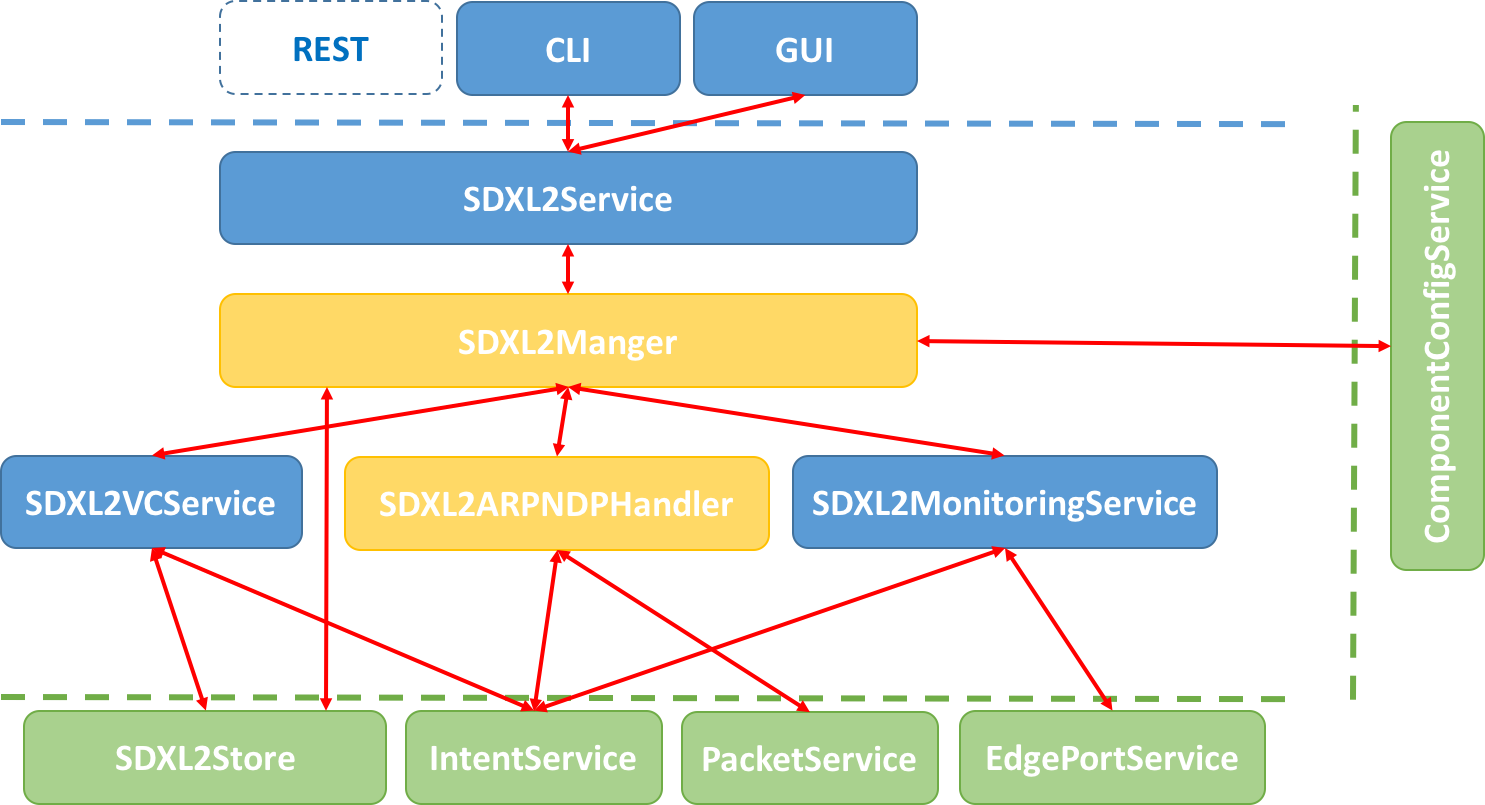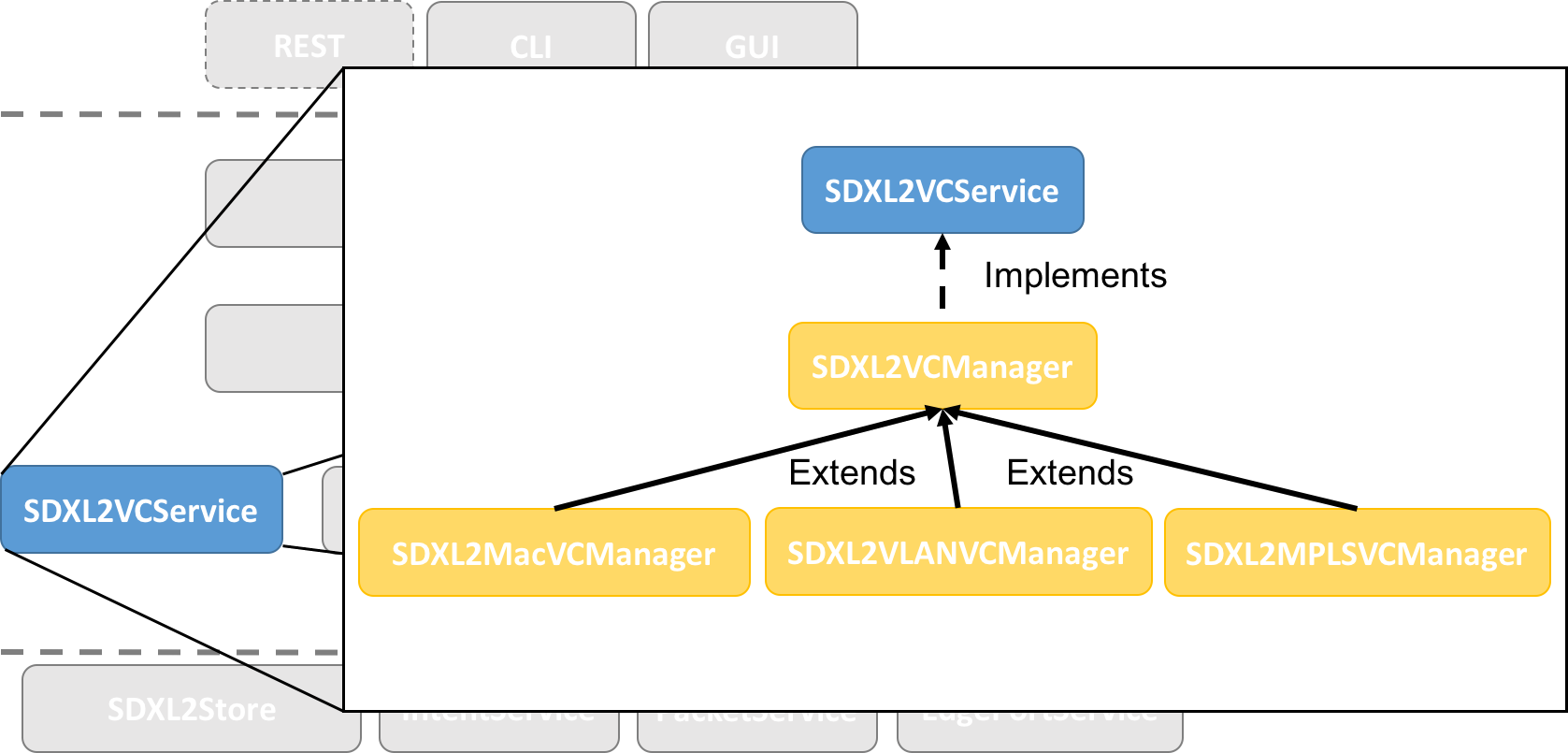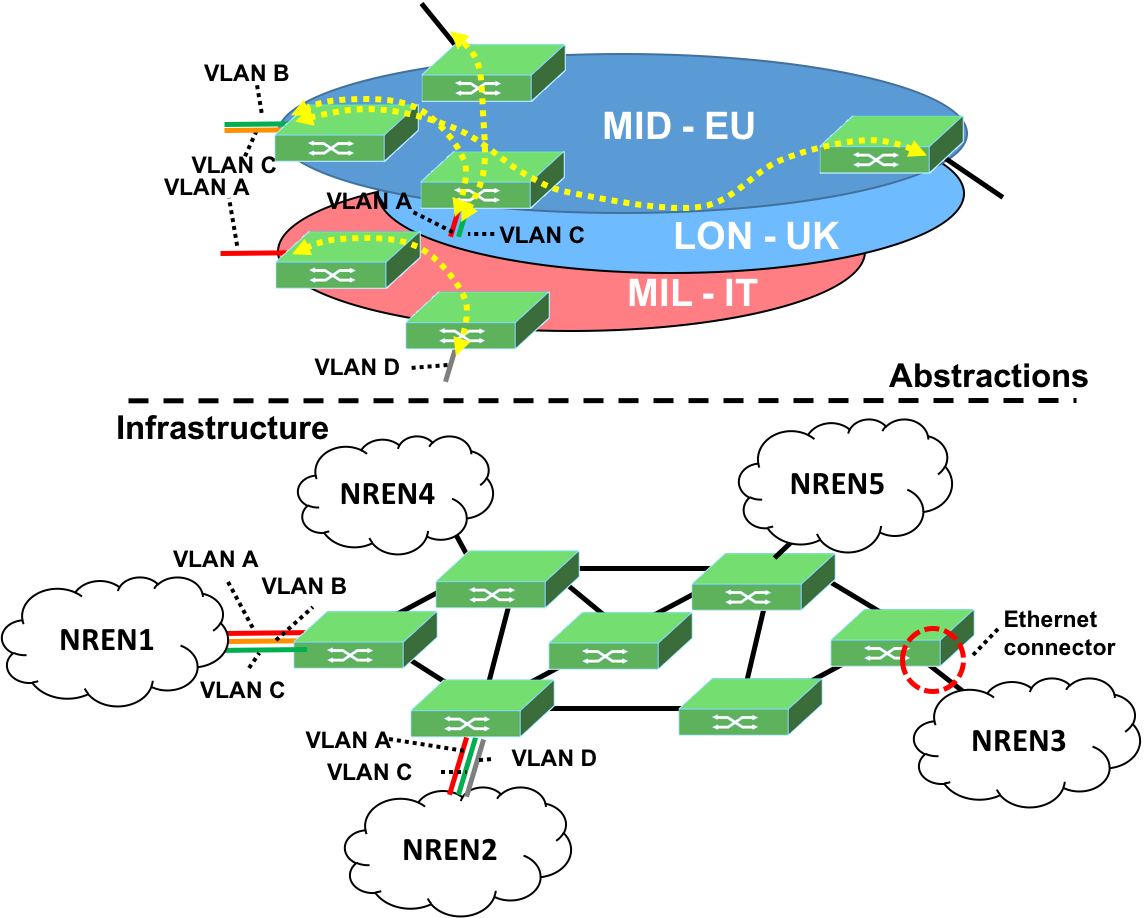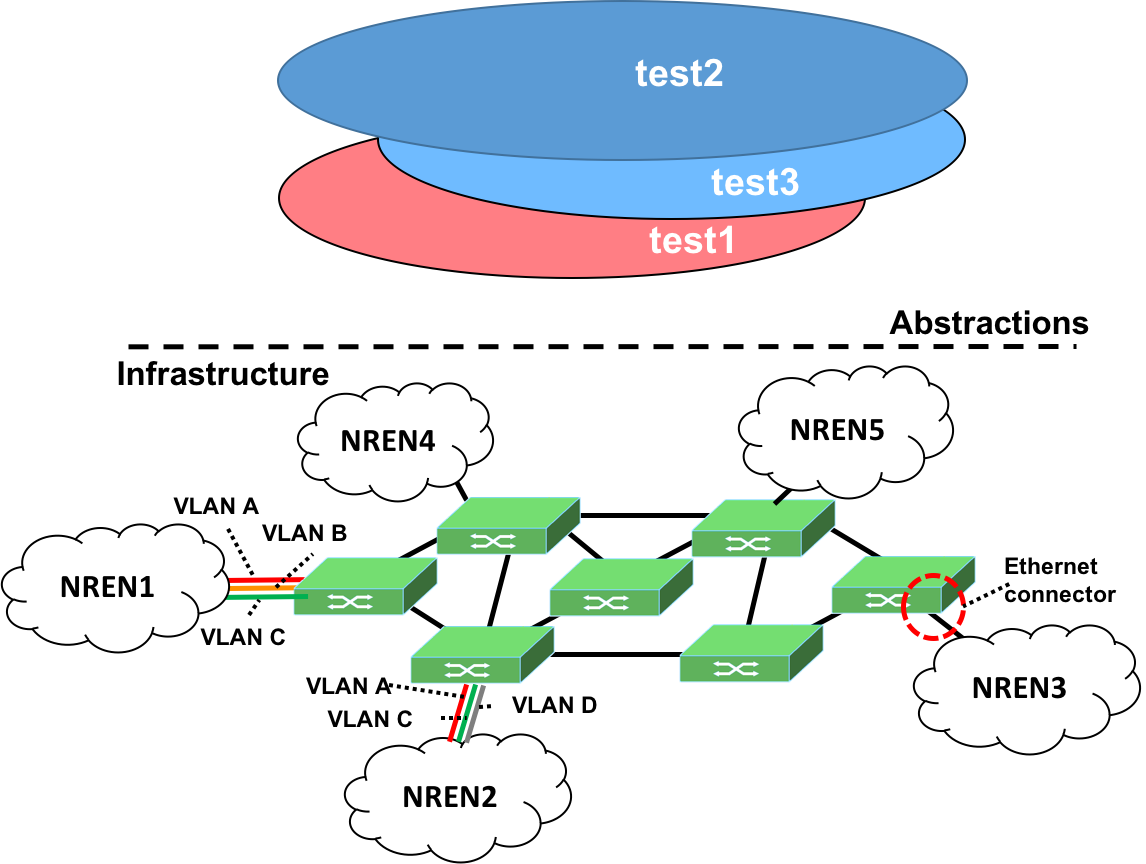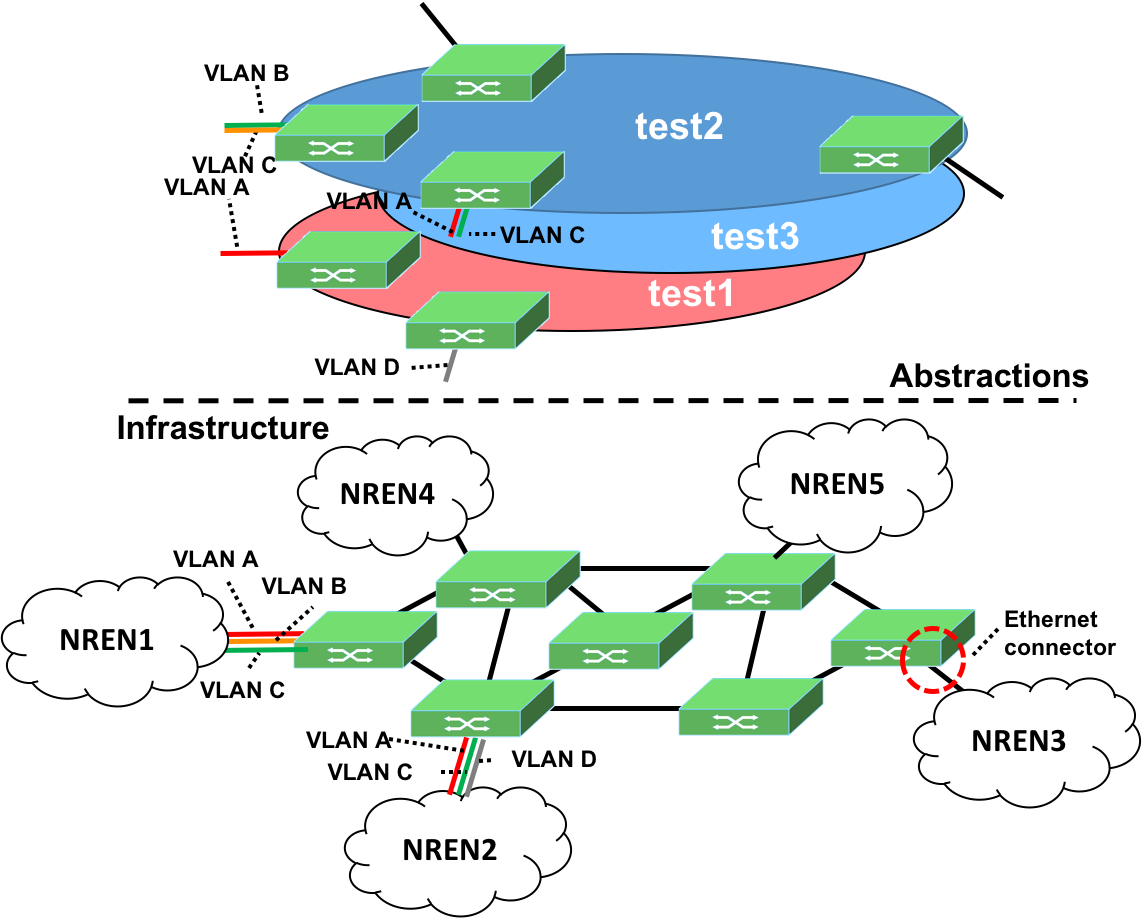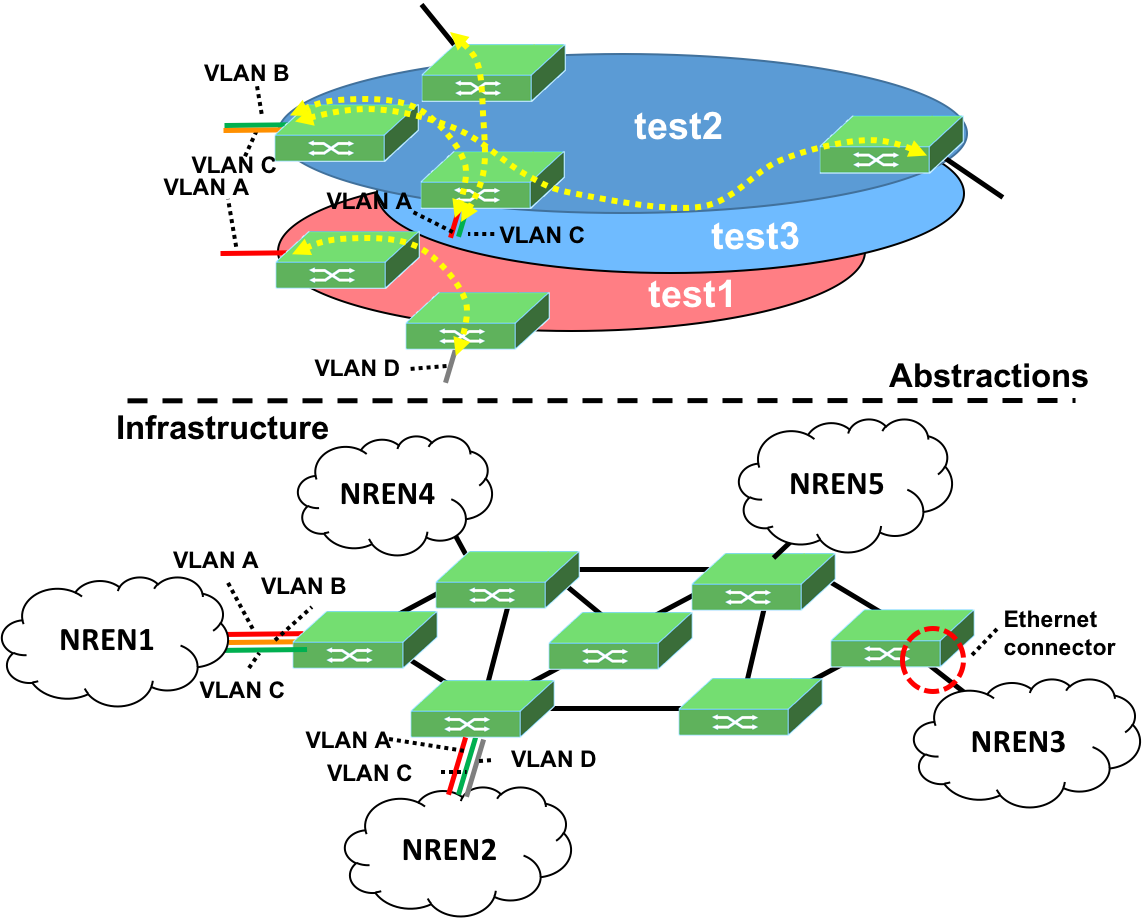With the term L2 – SDX, we mean a general service able to create multi-domain Ethernet Circuits between endpoints which can be physical Ethernet interfaces or VLANs. In general, the offered layer 2 services belong to the class of IP Virtual Leased Line services (IP VLL). These services meet the specialized needs of the research and education communities and they are often referred as “near term” or pure connectivity SDXs.
Description
SDX-L2 is a new ONOS application meant to support the above workflow. It provides automated provisioning of Layer 2 Tunnels between Endpoints, which belongs to the class of the IP-Virtual Leased Line (IP over something). It is implemented as callable services, in this way other ONOS subsystems can use its services. The application offers also a Monitoring component to track the operation of the system: i) Status of the connectors; ii) Status of the virtual circuits. By design the application is Flexible, SDX-L2 can run in several ONOS deployment and Large – scale SDX can be controlled by multiple SDX-L2 instances;
SDX-L2 provides users with high level APIs:
- Operators see the abstraction of managing virtual SDXs;
- An SDX contains edge connectors (physical or virtual);
- Connectors can be interconnected through virtual circuits;
High level architecture
The following images provide an high level view of the architecture:
Example scenario and tutorial
The following image provide a big picture of the example scenario. Let us consider a number of SDN switches interconnected by a set of links. At edge of the network a number of National Research and Education Networks (NRENs) request the establishment of Layer 2 Circuits to support the needs of their customers:
Create three SDX-L2s:
onos> sdxl2-add test1
onos> sdxl2-add test2
onos> sdxl2-add test3
onos> sdxl2-list
SDXL2
--------------
test1
test2
test3
Create two CPs and list brief and detailed info:
onos> sdxl2:sdxl2cp-add -ce_mac 00:00:00:00:00:01 test1 of:0000000000000003/2 Sw3P2 5,15-17
onos> sdxl2:sdxl2cp-add -ce_mac 00:00:00:00:00:02 test1 of:0000000000000002/1 Sw2P1 6,19-21
onos> sdxl2:sdxl2cp-list
Status SDXL2 Connection Point
-----------------------------------------------
ONLINE Sw2P1
ONLINE Sw3P2
onos> sdxl2:sdxl2cp Sw2P1
Status Connection Point Name Vlan IDs CE Mac Address
-------------------------------------------------------------------------------------------------------------
ONLINE of:0000000000000002/1 Sw2P1 [6, 19, 20, 21] 00:00:00:00:00:02
Create a VC connecting the two CPs and get its details:
onos> sdxl2:sdxl2vc-add test1 Sw2P1 Sw3P2
onos> sdxl2:sdxl2vc-list
Status Virtual Circuit
-----------------------------------------------
ONLINE Sw2P1-Sw3P2 onos> sdxl2:sdxl2vc test1:Sw2P1-Sw3P2
Status Connection Point Name Vlan IDs CE Mac Address
-------------------------------------------------------------------------------------------------------------
ONLINE of:0000000000000002/1 Sw2P1 [6, 19, 20, 21] 00:00:00:00:00:02
ONLINE of:0000000000000003/2 Sw3P2 [5, 15, 16, 17] 00:00:00:00:00:01 Status Intent
--------------------------------------------
ONLINE test1:Sw2P1-Sw3P2,4
ONLINE test1:Sw3P2-Sw2P1,3
ONLINE test1:Sw3P2-Sw2P1,1
ONLINE test1:Sw3P2-Sw2P1,4
ONLINE test1:Sw3P2-Sw2P1,2
ONLINE test1:Sw2P1-Sw3P2,1
ONLINE test1:Sw2P1-Sw3P2,2
ONLINE test1:Sw2P1-Sw3P2,3
Remove VC and check it exists no longer:
onos> sdxl2:sdxl2vc-remove test1:Sw2P1-Sw3P2
onos> sdxl2:sdxl2vc-listRemove CPs and check they exist no longer:
onos> sdxl2:sdxl2cp-remove Sw2P1
onos> sdxl2:sdxl2cp-remove Sw3P2
onos> sdxl2:sdxl2cp-listRemove SDX-L2 and check they do not exist anymore:
onos> sdxl2:sdxl2-remove test1
onos> sdxl2:sdxl2-remove test2
onos> sdxl2:sdxl2-remove test3
onos> sdxl2:sdxl2-listLinks
- Currently the code of application can be found in the ONOS sample application repository: https://github.com/opennetworkinglab/onos-app-samples;
